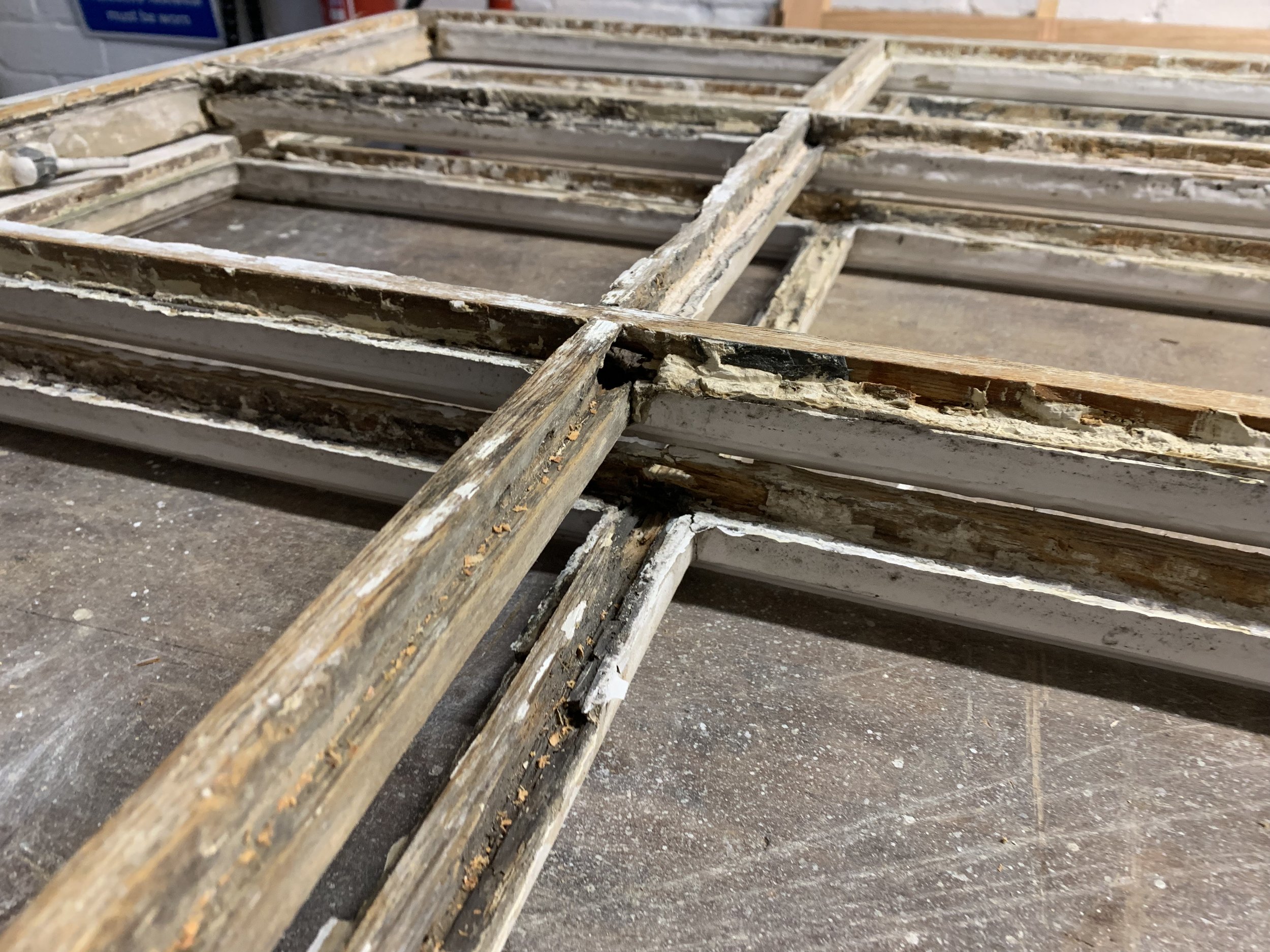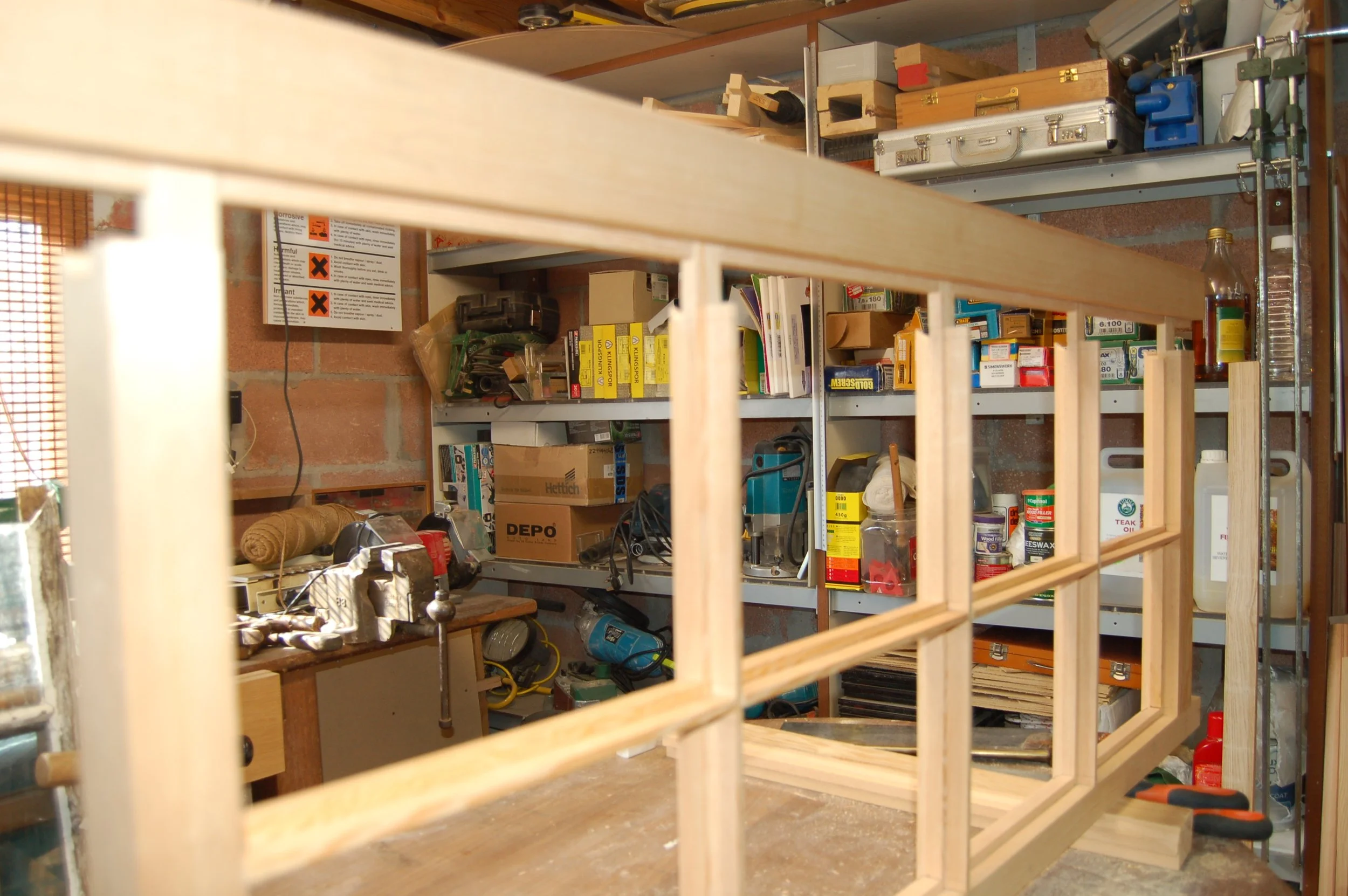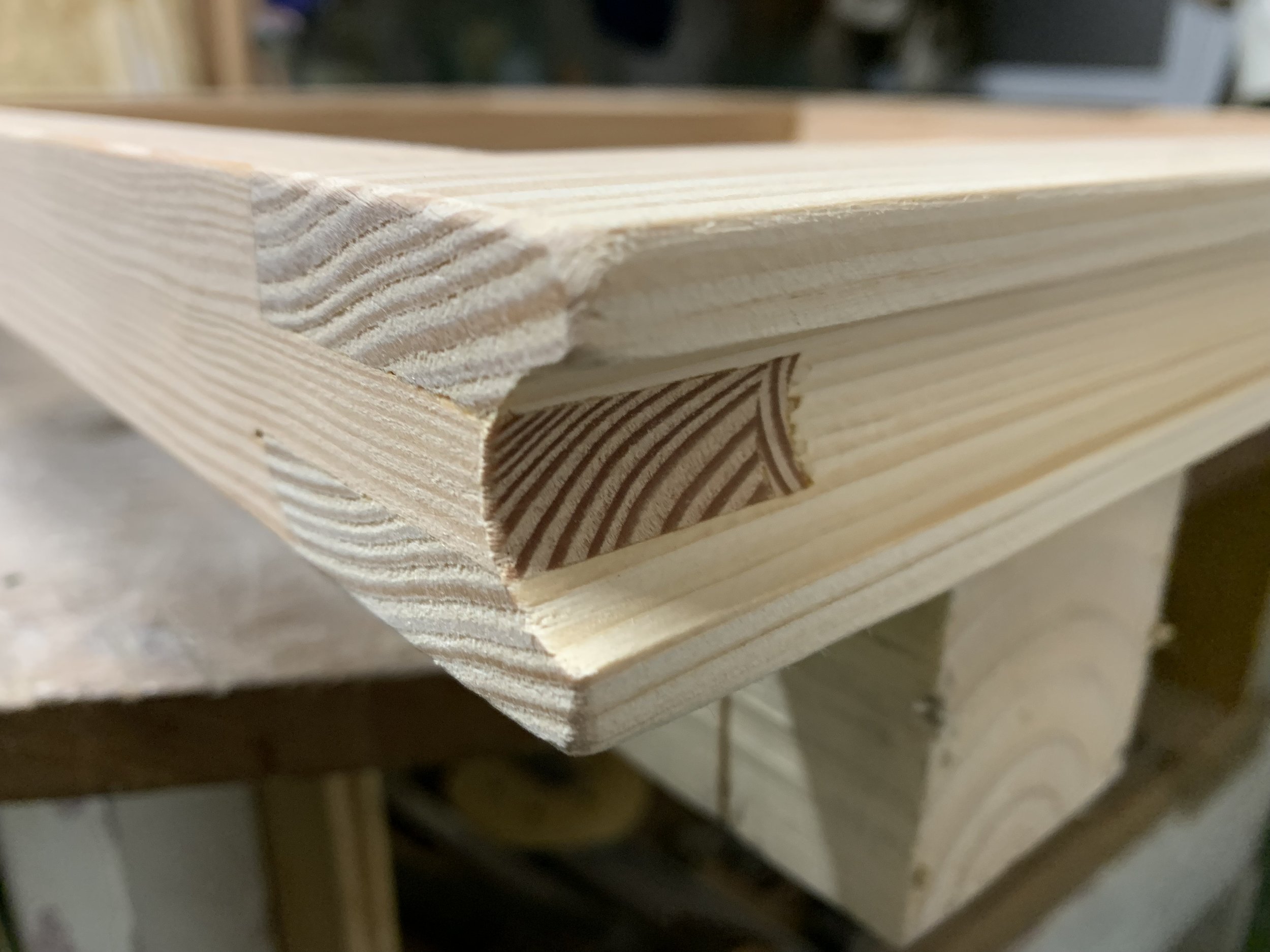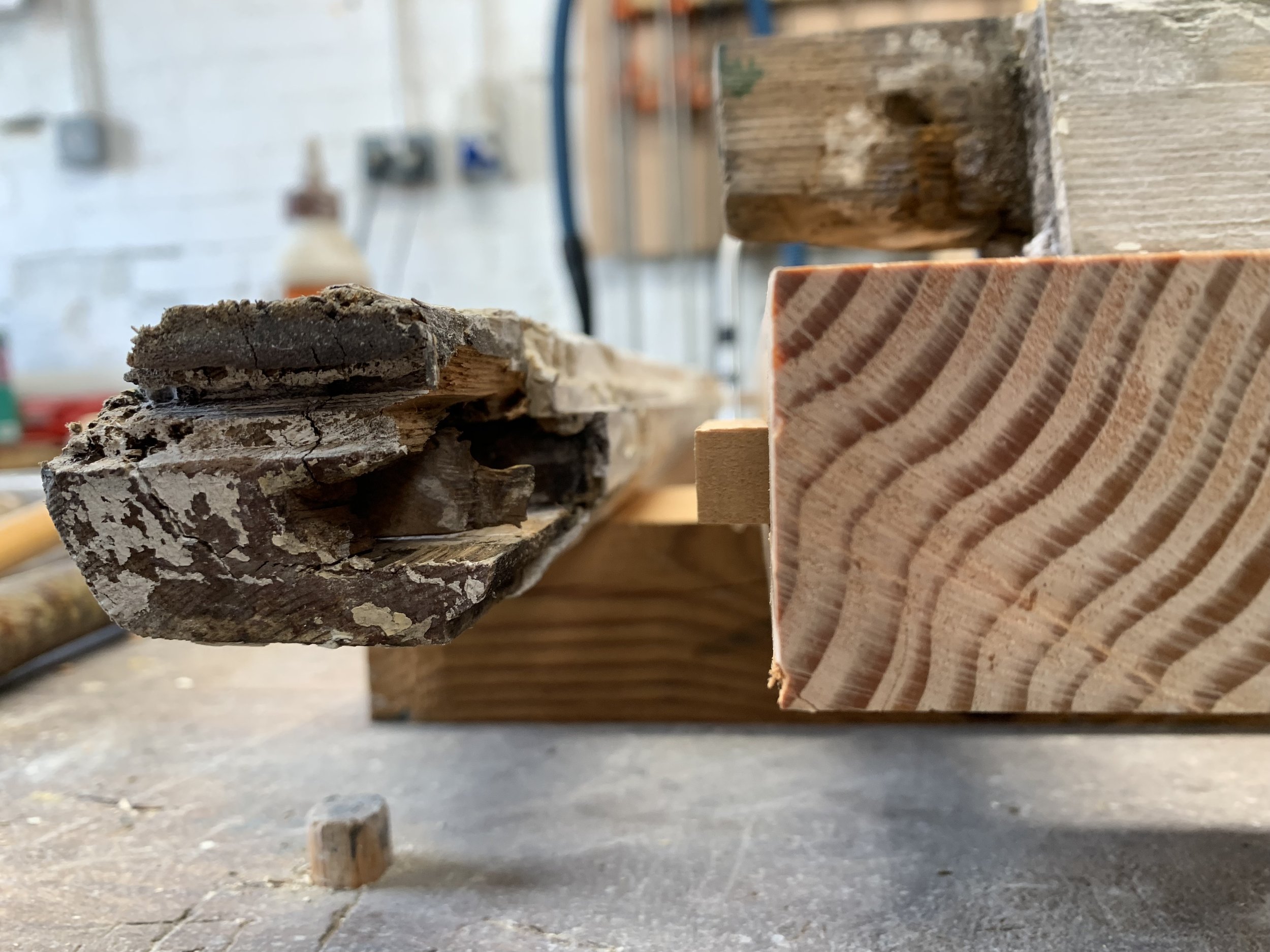LM Conservation
Preservation I Conservation I Joinery

Preservation
Preservation refers to processes that save organic material from decay. In the context of our work that means repair.
Wood is a beautiful, sustainable and durable material, that with proper care and maintenance can and should last for generations. Where woodwork has been damaged or neglected, a good quality repair can stop decay spreading and save the greater portion of the original joinery work for years to come.
The joinery methods and timber used in historic joinery were of a greater quality than those generally used today. This is just one reason why we advocate repair over replacement wherever possible.
When undertaking repairs to historic woodwork we also work to preserve other original features, such as historic glass and ironmongery. Beyond this we strive to replicate any missing or damaged items or details directly from the original architectural design. In our repairs we aim to keep as much of the original woodwork as possible, while keeping costs below the 75% conservation mark of a new replica.

Conservation
Conservation joinery refers to joinery that is found in Conservation Areas, which have been designated as having special historical or architectural interest or significance. Similarly, Heritage joinery refers to joinery that is used in listed buildings, that are recorded on the National Heritage List and classified into grades to identify their historic or architectural importance.
According to English Heritage, the main threat to Conservation Areas is “unsympathetic replacement windows and doors”. The Royal Institution of Chartered Surveyors (RICS) listed the top 10 crimes against period homes in a 2013 survey. At the top of the list was “replacing original good quality sash windows with inappropriate modern aluminium or PVC-U casements and stripping out original period doors.”
Conservation, in the context of our work, means managing essential changes to original architectural joinery and preventing loss. This is achieved through strong design and the combination of traditional joinery methods with high quality materials and modern, contemporary solutions.
Joinery such as windows and doors are key aspects of original architecture, often characterising an individual building as well as the feel of an area. This is uniquely part of their value and what makes them worth protecting. To this end our aim would always be to preserve by means of repair. However, where this is not possible, due to extreme damage, decay or prior inappropriate replacements, the replication of a window or door might be necessary. In cases where some original joinery remains, elsewhere in the property for example, we would work directly from the surviving joinery to replicate an appropriate replacement. Where no original joinery remains we would draw upon our knowledge, expertise and experience, supported by comprehensive research, to inform an appropriate design. We would then faithfully reproduce the joinery work in the traditional manner, empathetically restoring the timeless aesthetic relationship with that of the buildings original architectural design.

Joinery
In the context of our work, joinery can refer to both preservation and conservation woodwork depending on: the status of the building or local area, the input of any conservation officer dealing with works required and ultimately, the decisions of the client or property owner.
We follow best practices set out by the Institute of Historic Building Conservation (IHBC), the Society for Protection of Ancient Buildings (SPAB) and Cadw conservation principles. Our core values are also derived from those institutions and we will not deviate from these principles.
We use the terms replica, replicate and replication when referring to any joinery product that we make anew. This is because not only do we aim to match or reproduce the design elements of historic joinery work, such as overall proportions and fine detail, but we also construct our windows and doors using the traditional methods that would have been originally employed, for example: through-mortise and tenons, secured using wedges. Replicas of this kind can also be considered as a restoration.
Our Practice
As a practice we aim to achieve the highest quality repair with honesty and clarity. Our first job is to understand the needs of the client and provide an informed report on those needs. To this end, each job begins with a visual survey carried out on site. While the full extent of work needed is rarely entirely apparent, our experience over the years has provided us with the necessary knowledge to provide the most accurate estimate as possible.

Repair or Replicate: We Craft.
Conservation, Preservation, Joinery.
